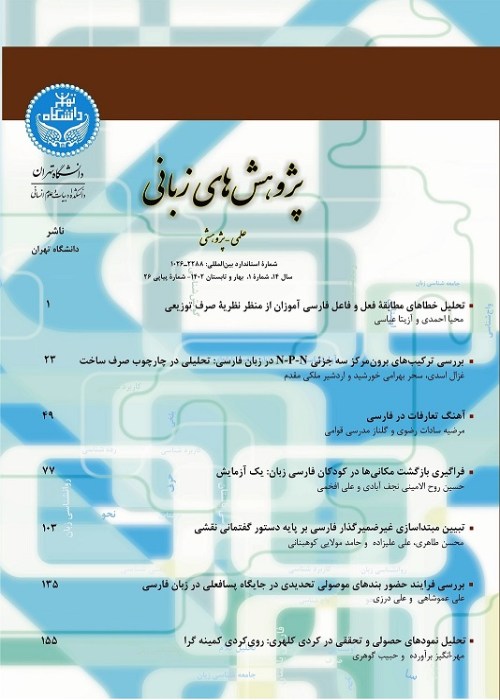Persian modal verbs and the expression of modality
Author(s):
Abstract:
Modal verbs and their different meanings can be investigated on the basis of various theoretical frameworks. In this paper، Persian modal verbs are examined and analyzed in terms of degrees and kinds of modality proposed by Palmer (1990). Our analysis shows that although bǎyad ‘must’ does not entail the proposition، it is used to express three degrees of epistemic modality، two degrees of dynamic modality and a degree of deontic modality. tavǎnestan ‘can’ and šodan ‘to become’، on the other hand، behave rather differently; they are used in expressing two degrees of epistemic modality، two degrees of deontic modality and a degree of dynamic modality. According to this research، Persian modals have the capacity to express all degrees and kinds of modality proposed by Palmer.
Keywords:
Language:
Persian
Published:
Language Research, Volume:4 Issue: 1, 2013
Pages:
21 to 40
magiran.com/p1216976
دانلود و مطالعه متن این مقاله با یکی از روشهای زیر امکان پذیر است:
اشتراک شخصی
با عضویت و پرداخت آنلاین حق اشتراک یکساله به مبلغ 1,390,000ريال میتوانید 70 عنوان مطلب دانلود کنید!
اشتراک سازمانی
به کتابخانه دانشگاه یا محل کار خود پیشنهاد کنید تا اشتراک سازمانی این پایگاه را برای دسترسی نامحدود همه کاربران به متن مطالب تهیه نمایند!
توجه!
- حق عضویت دریافتی صرف حمایت از نشریات عضو و نگهداری، تکمیل و توسعه مگیران میشود.
- پرداخت حق اشتراک و دانلود مقالات اجازه بازنشر آن در سایر رسانههای چاپی و دیجیتال را به کاربر نمیدهد.
In order to view content subscription is required
Personal subscription
Subscribe magiran.com for 70 € euros via PayPal and download 70 articles during a year.
Organization subscription
Please contact us to subscribe your university or library for unlimited access!




